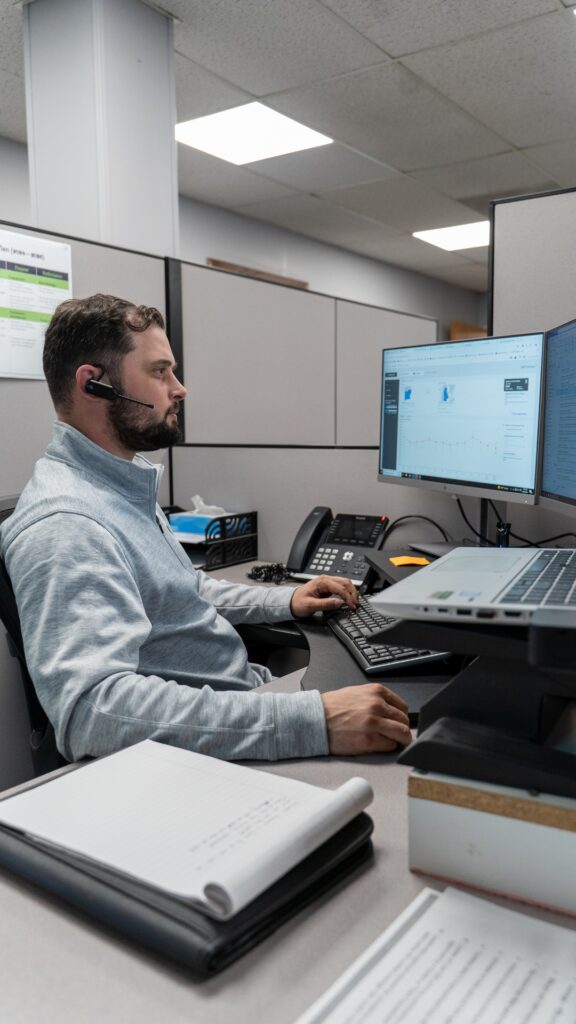This website uses cookies so that we can provide you with the best user experience possible. Cookie information is stored in your browser and performs functions such as recognising you when you return to our website and helping our team to understand which sections of the website you find most interesting and useful.
Port Services
Port Services:
Expert handling for
your cargo needs
Streamline your shipping and receiving processes with our comprehensive port solutions designed to handle logistics efficiently, ensuring smooth and timely transfers of your goods across international waters.
GET IN TOUCH

Our dedicated team is ready to provide you with personalized answers and support, ensuring you have all the information you need.
About RGL Logistics' Port Services
Strategically Located Port Services
for Your Maritime Needs.
If you need maritime shipping services to receive your raw materials in or to ship your finished product out, utilize our port services which are conveniently located in the Port of Green Bay with access via the Saint Lawrence Seaway.
What are the benefits?
RGL port services deliver unparalleled efficiency and reliability for your cargo handling needs. With strategic port locations, dedicated barge services, and robust port security, we ensure your cargo is consistently handled in a smooth and timely manner.

Customizable solutions to meet your unique needs
Enjoy personalized services that optimize port operations, increase productivity, and drive growth in your business

Warehouse storage space on-site
We offer 365,000 square feet of on-site warehouse space with overhead crane and heavy equipment handling services also readily available.

One-Stop-Shop for logistics services
With our 3PL capabilities, you work with one dedicated provider to meet your needs, ensuring a seamless process from start to finish.

Capable of cargo ships up to 700’
The system is designed to accommodate various product needs with flexibility and adaptability. Its versatility caters to a broad range of product types, ensuring optimal performance across multiple sectors.
Port Specs:
FAQ
Frequently Asked Questions
Dive into our comprehensive FAQ section where you’ll find answers to common queries about our services, processes, and more.
Don't see your question listed? Feel free to reach out. Our dedicated team is ready to provide you with personalized answers and support, ensuring you have all the information you need.
A ship is a large, self-propelled vessel designed for open seas and oceans, equipped with engines, navigation systems, and accommodations for crew and passengers. Ships can transport goods, passengers, and conduct various operations like fishing and research.
A barge, in contrast, is a flat-bottomed vessel primarily used in rivers and canals. Barges are usually not self-propelled and are towed or pushed by tugboats. They are designed to carry heavy loads, such as bulk goods and materials, over shorter distances in calm waters. The main differences lie in propulsion, navigational capabilities, and usage purposes.
Stevedoring is the process of loading and unloading cargo from ships in a port. Stevedores, or dock workers, are responsible for handling, moving, and securing goods on and off the vessels. This work involves operating cranes, forklifts, and other machinery to ensure efficient and safe cargo transfer. Stevedoring is a critical part of port operations, facilitating the smooth flow of goods in maritime trade.
The tariffs for the St. Lawrence Seaway in Green Bay cover various fees for using the waterway, including tolls for transiting vessels, cargo handling charges, and specific service fees.
For precise and up-to-date information, it’s best to refer to the official St. Lawrence Seaway website or contact the Seaway directly. The tariffs can vary based on the type of vessel, cargo, and specific services required. Detailed tariff schedules are typically published annually on Seaway’s official site.
Some drawbacks include not building equity, possible rent increases, and having less control over the property in terms of modifications and usage. Additionally, there's always a risk that the lease may not be renewed at the end of its term.
Currently, there are periodic shortages of both barges and ships due to various factors. These can include supply chain disruptions, increased demand for shipping, labor shortages, and geopolitical events. For instance, high demand for shipping goods, especially during peak seasons, can lead to a shortage of available vessels. Additionally, delays in shipbuilding and maintenance can exacerbate these shortages. The specific situation can vary over time, so it is advisable to consult recent industry reports or news sources for the most current information on barge and ship availability.
To find a barge:
1. Contact Barge Companies: Reach out to barge service providers for availability and costs.
2. Online Directories: Use marine transportation directories to locate barge services.
3. Industry Associations: Consult associations like the American Waterways Operators (AWO) for recommendations.
4. Freight Brokers: Engage freight brokers to connect with barge operators.
5. Port Authorities: Contact local port authorities for barge services information.
6. Online Marketplaces: Use shipping and logistics platforms to find and book barge services.
- 1401 State St, Green Bay, WI 54304
- (920) 432-8632
- info@rgllogistics.com


